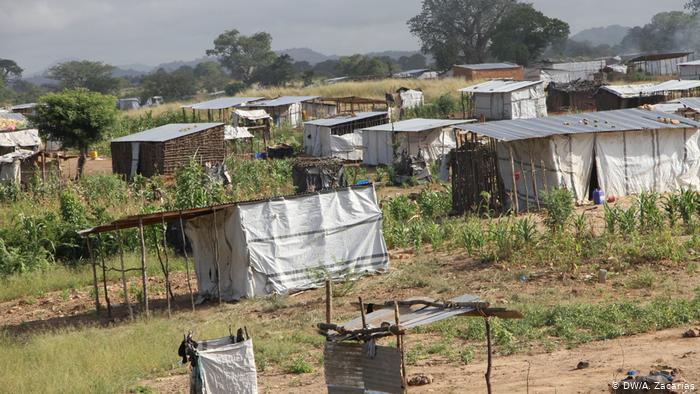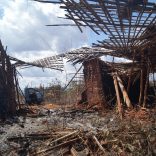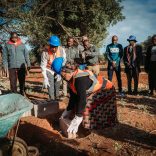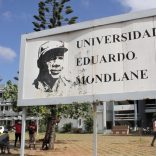Norway and UNFPA strengthen vital support for women and girls with new USD 2.8 million agreement ...
Mozambique: Life in Tete, one year after the Rovubué floods

Improvised houses in Chimbonde, Tete. [Photo: DW]
On March 8, 2019, the Chingodzi neighbourhood in Tete city woke up to the threat of the Rovubué river flooding. Resettled families there are still living in makeshift homes and tents.
Behind them lies a trail of destruction. Official figures number six residents dead due to flooding caused by the Rovubué river, one of the tributaries of the Zambeze. Thousands of people were driven from their homes, losing everything they had built up over many years.
A resettlement centre for more than 500 families was opened in the Chimbonde region, about seven kilometres from the city. One year on, most of them are still living there, in makeshift homes and tents donated by the National Institute for Disaster Management (INGC) and its partners.

“There, where we lived [in the risk areas], we are afraid of a possible flood in the future,” says Adelino Alberto, secretary of the Chimbonde neighbourhood. One of the major difficulties in his current residential area has to do with the access road. “The road is not good. We are trying to ask the government to at least improve the road, so that we can get transport from here to the city,” he says.
On the other hand, the Chimbonde neighbourhood has problems in regard to water supply and electricity. As for water, one borehole supplies around 2,500 people.
Support continues to arrive
Families resettled in Chimbonde continue to receive support from a variety of non-governmental organisations. Diakonie – a German humanitarian aid NGO linked to the Protestant Church – donated more than €320,000, and the Christian Council of Mozambique (CCM) in Tete has been assisting residents with building materials and food.
“We bought zinc sheets for 565 families – 12 sheets for each family. That is why, when you go there, you will see some houses,” CCM coordinator in Tete Tiago Vilanculos boasts.
“Some people have become accustomed to holding out their hands [begging], and are making no effort to improve their own lives. Others are living in the same tents given to when they were brought there,” Vilanculos notes, adding that “awareness is being cultivated”.
“There are several entities at work there, but they are not changing,” he says about residents in Chmibonde.
Paulo Feniasse is one of those who saw their houses destroyed by the floods. Despite receiving building materials from the CCM, his home remains unimproved.
“We are still in the rainy season, and we can’t improve the house now. We received the CCM [zync] sheets and beams but, to build, we have to go cut [wooden] poles. But where you can find the poles, there is a small river in full flood,” Feniasse explains.
Damaged infrastructure

The Rovubué floods also cut the bridge that connects the village of Moatize with Tete city. A year later, the infrastructure is yet to be rehabilitated. Costs are estimated at around US$3.7 million (around €3.2 million).
“The works on the bridge started in August of last year and will end in August of this year. The assessment that we have made to date on site is that we are in the order of 50% done,” the National Road Administration’s Tete representative, Jeremias Mazoio, told DW Africa.
Mazoio points out that the new Rovubué bridge will be more resilient. “Which means that if we have flood of the same magnitude again, they will not damage the infrastructure,” he explained.
Until the work is finished, the crossing will continue to be restricted to vehicles of no more than 3.5 tons and pedestrians.












Leave a Reply
Be the First to Comment!
You must be logged in to post a comment.
You must be logged in to post a comment.